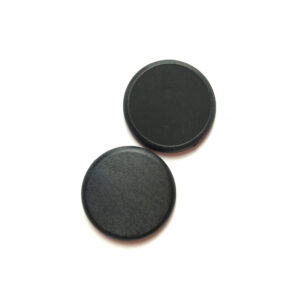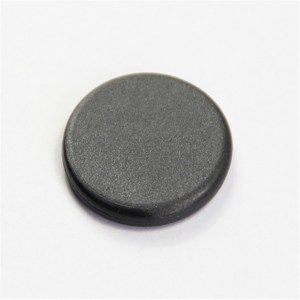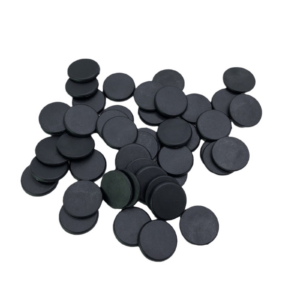PPS NFC Smart Button
PPS NFC Smart Button are designed to be robust and enduring, fully waterproof, and able to withstand heat, pressure, and even harsh chemicals. Boasting a compact design, these tags are only 30mm in diameter and 2.3mm in depth, designed to resemble standard buttons. This form factor allows them to be easily embedded into garments just like normal buttons.
Description
|
Item Name
|
PPS NFC Smart Button
|
|
Material
|
PPS
|
|
Color
|
Black etc
|
| MOQ | 500pcs |
|
Manufacturer/Chip
|
NXP I Code Slix ; other options :Ntag213,Ntag215,Ntag216,Mifare Ultralight ev1 etc
|
|
Frequency
|
13.56MHz
|
|
Memory
|
1k Byte ; other Chip’s memory :144 Bytes,504Byte ,888 Byte,64Byte etc
|
|
Read Distance
|
1~5cm
|
|
Work Mode
|
passive
|
|
Working Temperature
|
-25℃~+110℃
|
|
Storage Temperature
|
-40℃~+85℃
|
|
Short-term Temperature Resistance |
washing: 90℃, 15 minutes; converter pre-drying: 180℃, 30 minutes, 200 times; ironing: 180℃, 10 seconds, 200 times; high
temperature sterilization: 135℃, 20 minutes |
|
Features
|
waterproof, washable, high-temperature resistance
|
|
Life
|
washing 200 times or 3 years
|
|
Applications
|
laundry management and tracking
|
-
Industrial Washing: They can handle tough industrial washing environments, ensuring the best tracking and inventory management.
-
Uniform Management: These tags help in effective management and tracking of employee uniforms in various sectors.
-
Medical Apparel Management: Essential for hospitals and healthcare providers, they aid in the efficient organization, tracking, and maintenance of medical garments.
-
Personnel Patrol Management: It assists in tracking and managing patrol personnel, ensuring their safety and efficiency.
-
Military Clothing Management: Extremely useful in military contexts, these tags allow for the systematic tracking and management of military clothing, improving organization and accountability.
The ICODE SLIX IC is a dedicated chip for intelligent label applications such as libraries, product authentication in different industries such as pharmaceutical, medical devices and alcohol, as well as production management in different areas of the industry. This IC is the third generation of a product family of smart label ICs based on the ISO standards ISO/IEC 15693 and ISO/IEC 18000-3, prolonging a successful story of NXP® in the field of vicinity identification systems.
Contactless energy and data transfer
Whenever connected to a very simple and easy-to-produce type of antenna (as a result of the 13.56 MHz carrier frequency) made out of a few windings printed, winded, etched, or punched coil, the ICODE SLIX IC can be operated without line of sight up to a distance of 1.5 m (gate width). No battery is needed. When the smart label is positioned in the field of an interrogator antenna, the high-speed RF communication interface enables data to be transmitted up to 53 kbit/s.
Anti-collision
An intelligent anti-collision function enables several tags to operate in the field simultaneously. The anti-collision algorithm selects each tag individually and ensures that the execution of a transaction with a selected tag is performed correctly without data corruption resulting from other tags in the field.
Features
ICODE SLIX RF interface (ISO/IEC 15693)
- Contactless transmission of data and supply energy (no battery needed)
- Operating distance: up to 1.5 m (depending on antenna geometry)
- Operating frequency: 13.56 MHz (ISM, world-wide license freely available)
- Fast data transfer: up to 53 kbit/s
- High data integrity: 16-bit CRC, framing
- True anti-collision
- Password protected Electronic Article Surveillance (EAS)
- Password protected Application Family Identifier (AFI)
- Data Storage Format IDentifier (DSFID)
- Additional fast anti-collision read
- Write distance equal to read distance
EEPROM
- 1024 bits, organized in 32 blocks of 4 bytes each
- 50 years data retention
- Write endurance of 100000 cycles
Security
- Unique identifier for each device
- Lock mechanism for each user memory block (write protection)
- Lock mechanism for DSFID, AFI, EAS
- Password (32-bit) protected EAS and AFI functionality





